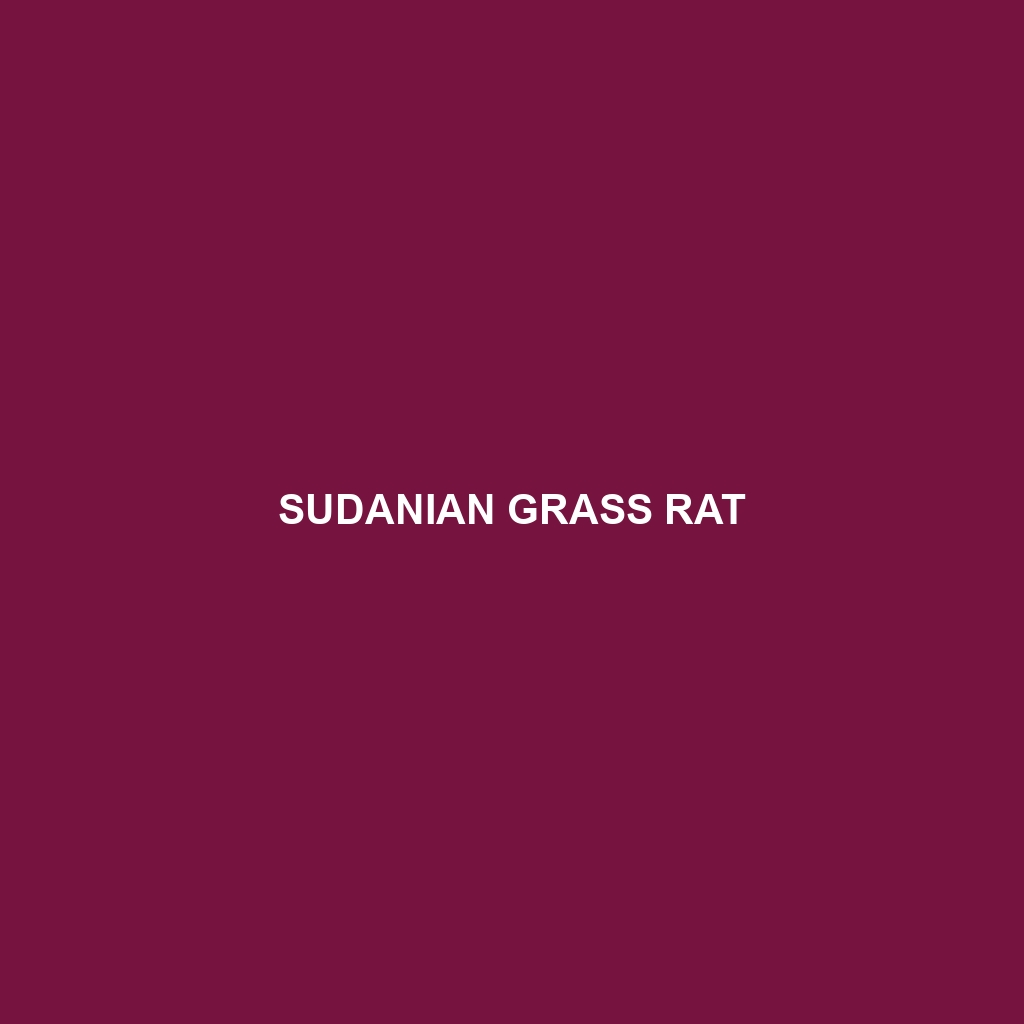Sudanian Grass Rat Description
Common Name: Sudanian Grass Rat
Scientific Name: Arvicanthis niloticus
Habitat:
The Sudanian Grass Rat primarily inhabits the savanna and grassland regions of Africa, particularly in countries such as Sudan, South Sudan, and parts of adjacent regions. They thrive in environments characterized by tall grasses and dense shrubs, which provide both shelter and abundant food resources. Their habitat is often associated with wet and moist grasslands, making them adaptable to both dry and wet seasons.
Physical Characteristics:
Sudanian Grass Rats are medium-sized rodents, typically ranging from 15 to 25 centimeters (6 to 10 inches) in length, excluding the tail. They possess a slender body covered in coarse fur that varies in coloration from light brown to yellowish, with a lighter underside. Their eyes are large and round, assisting with vision during dusk and dawn when they are most active. Notably, they have long ears and a relatively short tail, which adds to their distinctive appearance.
Behavior:
Sudanian Grass Rats exhibit nocturnal behaviors, making them primarily active during the night. They are known for their burrowing habits, creating extensive tunnel systems that provide refuge from predators and harsh weather. These rodents display social tendencies and often live in colonies, allowing them to benefit from group foraging and enhanced safety in numbers. Their vocalizations and scent-marking behaviors are integral for communication among colony members.
Diet:
The diet of the Sudanian Grass Rat mainly consists of a variety of grasses, seeds, and grains. They are herbivorous and have adapted to forage on the abundant vegetation found in their savanna habitats. These rats also consume leaves and roots, making them a crucial part of the ecosystem as seed dispersers. The ability to thrive on different plant materials highlights their adaptability and resilience in various environmental conditions.
Reproduction:
Sudanian Grass Rats breed throughout the year, with peaks occurring during the wetter seasons when food is most plentiful. Females typically give birth to litters of 2 to 6 young after a gestation period of about 21-25 days. The young are altricial at birth, meaning they are born helpless and require care from the mother. Weaning occurs around 3 weeks, while independence is reached by 6 weeks. This reproductive strategy allows populations to rebound quickly in favorable conditions.
Conservation Status:
The Sudanian Grass Rat is currently classified as “Least Concern” by the International Union for Conservation of Nature (IUCN), indicating that there are no immediate threats to its population levels. However, habitat destruction and climate change could pose future risks, emphasizing the need for continued monitoring and conservation efforts.
Interesting Facts:
Sudanian Grass Rats possess an impressive ability to adapt to their environment, allowing them to survive in both grasslands and agricultural fields. Their role as prey for various predators, including birds of prey and small carnivores, highlights their place in the food chain. Additionally, these rodents can reproduce quickly, aiding in rapid population recovery following environmental changes.
Role in Ecosystem:
As a herbivorous species, the Sudanian Grass Rat plays a vital role in its ecosystem by aiding in seed dispersal and influencing plant community dynamics. Their burrowing activities help aerate the soil, which benefits plant health and fosters nutrient cycling. Moreover, as prey for larger animals, they contribute significantly to the food web, supporting the health and diversity of their habitat.
